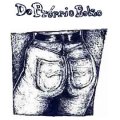|
 
um
lado deste disco deixou Bernie Krause indignado!
One
unorthodox venture was Apple's first and only subsidiary
label: Zapple Records. According to the Beatles, this was
a “paperback records concept”. Zapple releases,
to include the spoken word ramblings of such literati as
Richard Brautigan, Ken Kesey, Lawrence Ferlinghetti, Allen
Ginsberg, and Michael McClure, would be budget-priced speciaty
items that people were supposed to listen to once or twice
and throw away. Typically, however, the Beatles' interest
in the project proved to be but momentary. The only two
Zapple records that did materialize were John and Yoko’s
sequel to their less-than-universally—cherished Two
Virgins affair, and an album’s worth of Moog synthesizer
doodlings released under George Harrison’s byline.
Both may indeed have been disposable, but the other part
of the by time the LPs reached the shops: each sported a
harbhack-sized American list price of six dollars. (...)
But for most ordinary folk,
both John and Yoko’s "Unfinished Music
and George’s Electronic Sound were virtually
unlistenable. Harrison seemed to score a further black mark
when it was revealed tha some of the synthesized burps and
farts on his LP might not even have been his in the first
place.
According to Bernard L. Krause
(of Beaver ands Krause fame), who had met Harrison
when both were working on Jackie Lomax’s Apple albun,
he and George had hung around in the sudios one night after
the sessions in order for Krause to give the Beatle a Moog
synthesizer demonstration. Krause claims that his performance
was taped by Harrison, and subsequently used to fill out
a whole side of Electronic Sound. In a letter to
Rolling Stone, Krause stated that on the LP cover
“under” ‘produced by Geo. Harrison’
you will find my name silvered over. I am frankly hurt and
a bit disillusioned by the whole thing”.
At least the artwork on the jacket was George’s.
*Transcrito
do livro, "The Beatles Forever" pg 118-19. Editado
por McGraw-Hill Paperbacks, cujo autor é o próprio,
Nicholas Schaffner.
|
